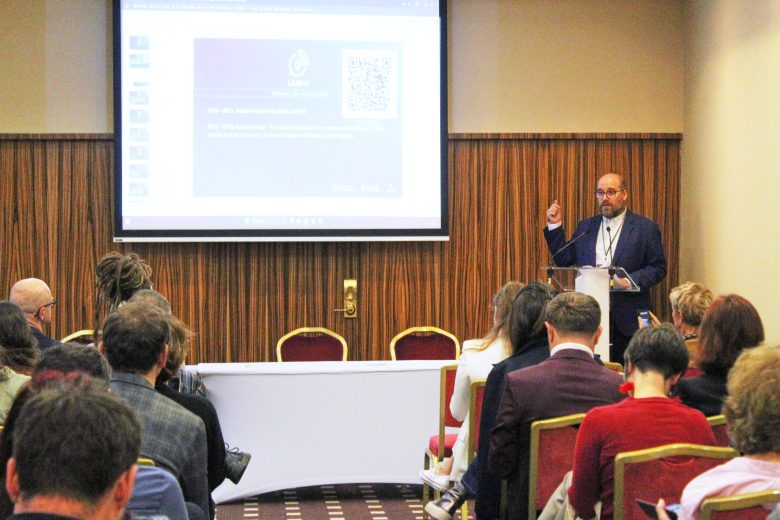From March 28 to 31, the LIMENet Media Innovation Fair in Budapest brought together over 100 media professionals from across Europe and beyond, creating a dynamic space for collaboration, experimentation, and shared learning. Organised with the support of the Center for Sustainable Media, the fair hosted fundraising clinics, hands,on workshops in inclusive journalism, and thought,provoking panels tackling the pressing challenges facing local media today.
A standout keynote was delivered by Joshi Herrmann, founder of Mill Media in Northern England, who presented a successful model for community,driven journalism and the power of local storytelling to drive engagement and sustainability. But beyond the presentations, the fair’s true strength lay in the community it fostered, one that recognised the urgency of solidarity in the face of shrinking resources, disinformation, and political pressure.

Innovation and solidarity in local media
For Tijana Blagojev, Research Associate at Centre for Media Pluralism and Media Freedom, the fair came at a critical moment. “I see many challenges for local media today,” she said. “However, an important development is the rising interest in the local media situation and increasing awareness of the importance of solidarity among local media and joint actions to improve the situation.”
She emphasised the growing cooperation between researchers and local practitioners as key to providing tailored recommendations for supporting independent journalism at the local level.
“My current area of interest is the provision of public interest news or what is sometimes called critical information needs, in local communities. We’ve observed not only in Serbia but across many EU countries that independent local media face disloyal competition from pro,government or municipality,owned outlets. These outlets often fail to inform citizens about the issues that truly affect them, which makes the public interest information landscape incredibly fragile.”
For Tijana, LIMENet offers more than just funding and networking opportunities it builds the infrastructure for a support system long overdue:
“It can assist in building a joint front for local media so they can fight for a better position. It can also contribute to quicker responses when it comes to direct attacks on local media workers. Finally, it can build a solid solidarity and cooperation network that is currently missing and that must stretch beyond national borders.”
Meeting the moment with community and creativity
For Douglas Arellanes, co,founder and director of innovation at Sourcefabric, the stakes couldn’t be clearer:
“I’m seeing a scramble for resources that I don’t remember ever being this bad. The situation was already deteriorating before the loss of USAID funding, but that has made things significantly worse.”
Doug points to the rise of so,called “pink slime” websites, content farms masquerading as local news and sustained disinformation campaigns as serious threats to local journalism. Yet, he also sees hope in technology and community,led innovation.
“Now more than ever, the core challenge is to keep the lights on to find ways to cover the costs of doing journalism. I’m encouraged by community,driven projects that have found ways for that community to support the work and often in doing so, making the community stronger.”
He highlighted new low,code and no,code tools that reduce the technical barriers to launching digital media products, and called for an expanded definition of journalism:
“I’m very encouraged by grassroots efforts like Watch Duty, a nonprofit tool for monitoring wildfires created by volunteers. When we expand our definition of journalism to include more data,driven products that solve real community problems, we can serve the public better.”
Doug found the LIMENet Fair to be a hopeful sign, “I was very encouraged by the calibre of both the attendees and the presenters. I hope efforts like this can expand, and quickly, because the need is so great right now.”
A path forward
The Budapest edition of the LIMENet Media Innovation Fair underscored what many in the sector already know: there is no silver bullet to save journalism, but there is strength in collective experience and innovation.
As Doug says, “The sooner we can move away from the mentality of ‘Will X save journalism?’ the better. The more we share our experiences and know,how, the better off we’ll be, and that’s where LIMENet can make a real difference.”
For MDI and our partners, this fair reaffirmed our belief that local media is not only viable but essential, and that with the right tools, networks, and shared commitment, it can thrive.

